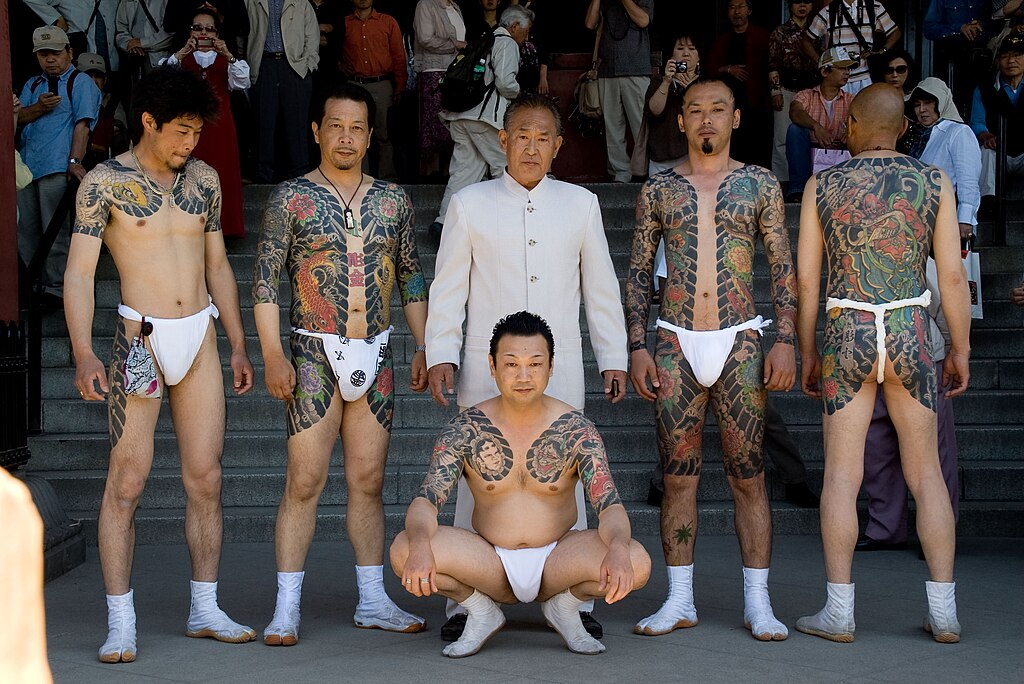Aug 24, 2017
Get Inked! A History of and Places to Get a Tattoo in Hiroshima
Even before I came to Japan, I’d heard stories about tattoos being a no-go if you wanted to go to an onsen (hot spring) or public bath and a definite no-no for getting a job. As far as the Japanese were concerned, the only people who had tattoos were yakuza (Japanese mafia).
But, oh my goodness, so not true (except for the part about them being socially unacceptable). Once I arrived and started talking to people and doing a little research, I found out some interesting information. For starters, tattooing in Japan has a long history. Let’s start at the beginning.
The History of Tattooing in Japan
Like all things rebellious, tattoos were seen as a way of giving the proverbial finger to the ruling class of samurai who imposed strict controls over all aspects of society. It’s no surprise, then, that the real height of tattooing in Japan was at this particular point in history.
The boom ended when Japan finally opened its doors to foreign ships during the mid 19th century. Its isolation from foreign influences meant Japan lacked many of the modern technologies found in the rest of Asia and other parts of the world and thus risked being conquered.
One popular argument as to why tattooing was banned is because the Japanese government thought Japan needed to appear civilized to its Western visitors and that foreigners would find the practice extremely primitive.
Tattoo Parlors in Hiroshima
Funnily enough, Japan seems to have forgotten its history regarding this matter. Even funnier is that when I asked around about places to get a tattoo in Hiroshima, I was told by some locals that there are no tattoo parlors in Hiroshima. I should say here that Hiroshima is known to be one of the most conservative places in all of Japan, therefore I shouldn’t have been surprised by this response.
Nevertheless, there are a number of tattoo parlors here, all doing a roaring trade and, considering that us foreigners are in the minority, that means there are a lot more Japanese people walking around with tattoos than we or they think!
Gak Tattoo
The most popular place in Hiroshima used to be Wild Monkey. Just to highlight what I mean: for a large tattoo that requires many hours and a number of sessions, there was often a six-month or more wait list.
Unfortunately, the talented tattoo artist left and moved to the Netherlands after working for 23 years in Hiroshima (and now there’s not even a wait list — he’s in such high demand, he just doesn’t take new customers).
This leaves us with the other place people mention a lot: Gak Tattoo. This is a great choice if you want a tattoo with a lot of color, as they really know how to make tattoos that pop. Don’t be afraid to go to them with quite complex designs.
Address: 2F, 13-1 Fujimicho, Naka Ward
Web site: http://www.spiral-design.net/pg20.html
Fujiyama Tattoo
I ended up going to the second main place in town. A friend made an appointment for me without my knowledge and then told me I was finally going to get them done instead of just talking about them. Thank you — I needed that push!
The place she knew and recommended is Fujiyama Tattoo, which has branches in Teramachi, Furuichi, and downtown near Namiki Dori.
The guys here don’t speak English, but they told me they have foreigners in all the time. Somehow, they manage to convey their messages both ways until the person is satisfied with his/her tattoo. In my case, my Japanese friend did the fine-detail translating for me, and, I must admit, it was reassuring to have someone with me to make sure I didn’t freak out and leave or miss out on a vital piece of information about my tattoo because it got lost in translation.
Address (Namiki Dori branch): Namiki Fits Building 1F, 6-6-9 Mikawacho, Naka Ward
Address (Teramachi branch): Heya Building 1F, 2-31 Teramachi, Naka Ward
Address (Furuichi branch): Nishimura House 1F, 1-26-7 Furuichi, Asaminami Ward
Web site: https://www.fujiyama-tattoo.com/
LS Studio
There’s high demand for tattoos from LS Studio due to the talent of the artist at this parlor. Check the gallery on the website for some idea of the styles he does (and his skill). His tattoos are black and gray, color, and Japanese style, among other categories. Book in advance to make sure you’re able to grab a spot while you’re in Hiroshima.
Address: Legacy Building 8-5 Fujimicho, Naka Ward
Web site: http://www.ls92.com/
Horitamotsu Japanese Tattoo Studio
One of the larger tattoo parlors in Hiroshima is Horitamotsu Japanese Tattoo Studio. It’s a great spot for getting a tattoo with little notice — plus, the artist speaks English, which may make communicating what you want easier. The artist has been tattooing since 1992 and now has a vast portfolio of mostly traditional Japanese designs (although he is willing to do other styles on request).
Address: Mochizuki Building 302, 6-24 Nagarekawacho, Naka Ward
Web site: https://www.horitamotsu.com/
The Takeaway
Whichever place you end up choosing to get your tattoo, remember the artists are all professionals who will give you the low-down on before and after care. They will ensure that you have the best experience possible and that you’re happy and comfortable before, during, and after you leave the parlor. Remember, this is Japan — customer service and appearance is everything!
Tattoos and tattooing in Japan is still a slightly taboo subject, but it is becoming more popular and acceptable than in the recent past, even here in conservative little Hiroshima.
Flickr user elmimmo, CC BY 2.0, via Wikimedia Commons


About the author